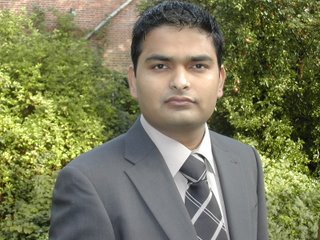India - My Mother land
 India, officially the The Republic of India, (Hindi: भारत ) is a country in South Asia. It is the seventh-largest country by geographical area, the second most populous country, and the largest liberal democracy in the world. India has a coastline of over seven thousand kilometres,[1] and borders Pakistan[2] to the west, Nepal, the People's Republic of China and Bhutan to the north-east, and Bangladesh and Myanmar to the east. In the Indian Ocean, it is adjacent to the island nations of Sri Lanka, Maldives and Indonesia.
India, officially the The Republic of India, (Hindi: भारत ) is a country in South Asia. It is the seventh-largest country by geographical area, the second most populous country, and the largest liberal democracy in the world. India has a coastline of over seven thousand kilometres,[1] and borders Pakistan[2] to the west, Nepal, the People's Republic of China and Bhutan to the north-east, and Bangladesh and Myanmar to the east. In the Indian Ocean, it is adjacent to the island nations of Sri Lanka, Maldives and Indonesia.India is referred to as the largest democracy in the world, by virtue of the fact that it has the largest electing population among democratic countries. The country has a federal form of government and a bicameral parliament operating under a Westminster-style parliamentary system. It has three branches of governance: the Legislature, Executive and Judiciary.
The territory of India constitutes a major portion of the Indian subcontinent, situated on the Indian Plate, the northerly portion of the Indo-Australian Plate, in southern Asia. India's northern and northeastern states are partially situated in the Himalayan Mountain Range. The rest of northern, central and eastern India consists of the fertile Indo-Gangetic plain. In the west, bordering southeast Pakistan, lies the Thar Desert. The southern Indian Peninsula is almost entirely composed of the Deccan plateau, which is flanked by two hilly coastal ranges, the Western Ghats and Eastern Ghats.
India is home to several major rivers, including the Ganga, Brahmaputra, Yamuna, Godavari, Kaveri, Narmada, and Krishna. India has three archipelagos – Lakshadweep off the southwest coast, the Andaman and Nicobar Islands-volcanic island chain to the southeast, and the Sunderbans in the Gangetic delta in West Bengal.
India has a rich and unique cultural heritage, and has managed to preserve its established traditions throughout history whilst absorbing customs, traditions and ideas from both invaders and immigrants. Many cultural practices, languages, customs and monuments are examples of this co-mingling over centuries. Famous monuments, such as the Taj Mahal and other examples of Islamic-inspired architecture have been inherited from the Mughal dynasty. These are the result of a syncretic tradition that combined elements from all parts of the country.
Indian music is represented in a wide variety of forms. The two main forms of classical music are Carnatic from South India, and Hindustani from North India, each of which has several popular sub classes. Popular forms of music also prevail, the most notable being Filmi music. In addition to this are the diverse traditions of folk music from different parts of the country. Many classical dance forms exist, including the Bharatanatyam, Kathakali, Kathak, Kuchipudi, and Manipuri. They often have a narrative form and are usually infused with devotional and spiritual elements.
You can get more information on :
1. https://www.cia.gov/cia/publications/factbook/geos/in.html
2. http://en.wikipedia.org/wiki/India


0 Comments:
Post a Comment
<< Home